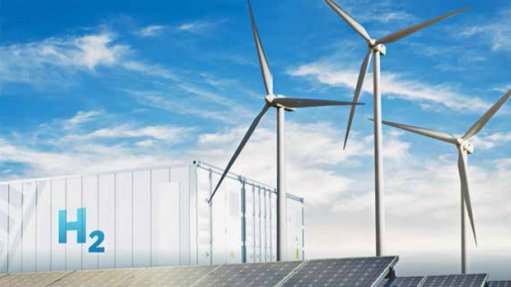
PERTH (miningweekly.com) – The Commonwealth Scientific and Industrial Research Organisation (CSIRO) on Wednesday launched a Hydrogen Industry Mission to accelerate key projects and boost research collaborations to help grow the sector.
Through the mission, CSIRO, government and partners in research and industry are investing more than A$68-million to help build a hydrogen industry in Australia, with a focus on bringing down the cost of production and distribution, reducing emissions and creating jobs.
Over the next five years, more than 100 projects worth $68-million have been planned by partners including the Department of Industry, Science, Energy and Resources, Australian Renewable Energy Agency, Fortescue Metals Group, Swinburne University, the Victorian government, the Future Fuels CRC, National Energy Resources Australia, and the Australian Hydrogen Council, along with collaborators Toyota and Hyundai.
CSIRO CEO Dr Larry Marshall said the unique mission-based partnership was the key to creating a new industry for the future energy needs of Australia and the world.
“Australia can become a renewable energy leader through the production, use and export of hydrogen, but it will only become a reality if we break through the $2/kg barrier. That needs Australia’s world class science working with CSIRO’s commercialisation expertise turning breakthrough science into real-world solutions,” Marshall said.
“Taking a Team Australia approach is essential to creating the 8 000 jobs and A$11-billion a year in gross domestic product that hydrogen can contribute to Australia’s economy as we build back better from the impacts of Covid-19.”
The investment complements the A$275.5-million announced in the 2021/22 Budget to support the development of regional hydrogen hubs, and brings government’s total support for Australia’s hydrogen industry to over A$900-million.
Minister for Energy and Emissions Reduction Angus Taylor said collaboration would help to drive down the cost of new hydrogen technologies.
“Australia can be a world leader in hydrogen and this partnership with the business and research communities is another positive step towards growing a clean and competitive hydrogen industry in Australia,” Taylor said.
Minister for Industry, Science and Technology Christian Porter said the CSIRO Missions Program is about bringing together research and industry to address major societal challenges in key areas, and delivering positive outcomes that lead to job creation and economic growth.
“The CSIRO Missions Program is about improving the productivity, competitiveness and sustainability of our established and emerging industries by fostering collaboration with the research sector to drive innovation,” Porter said.
“CSIRO has an exemplary track record of fostering cutting-edge collaborations between government, universities, industry and the community. The Hydrogen Industry Mission is the latest ambitious effort that will see technology help to lower emissions by expanding our clean energy options.
“Research and development is critical to securing the efficiencies needed across the supply chain to drive down the cost of hydrogen, and this investment will create new job opportunities, grow the economy and leverage the global advantages presented by Australia’s potential to become a major hydrogen producer and exporter.”
The Hydrogen Industry Mission is supported by A$38-million from CSIRO, with contributions of A$18-million from industry partners and A$12-million from the Australian government. Over the next five years, the mission will continue to scale up to achieve the H2 under A$2 objective.
Hydrogen is a key priority under the government’s Technology Investment Roadmap. The government is seeking to work with industry to lower the cost of clean hydrogen to under A$2 per kilogram. This is the point at which hydrogen becomes competitive with alternatives to allow for large-scale deployment across our energy systems.